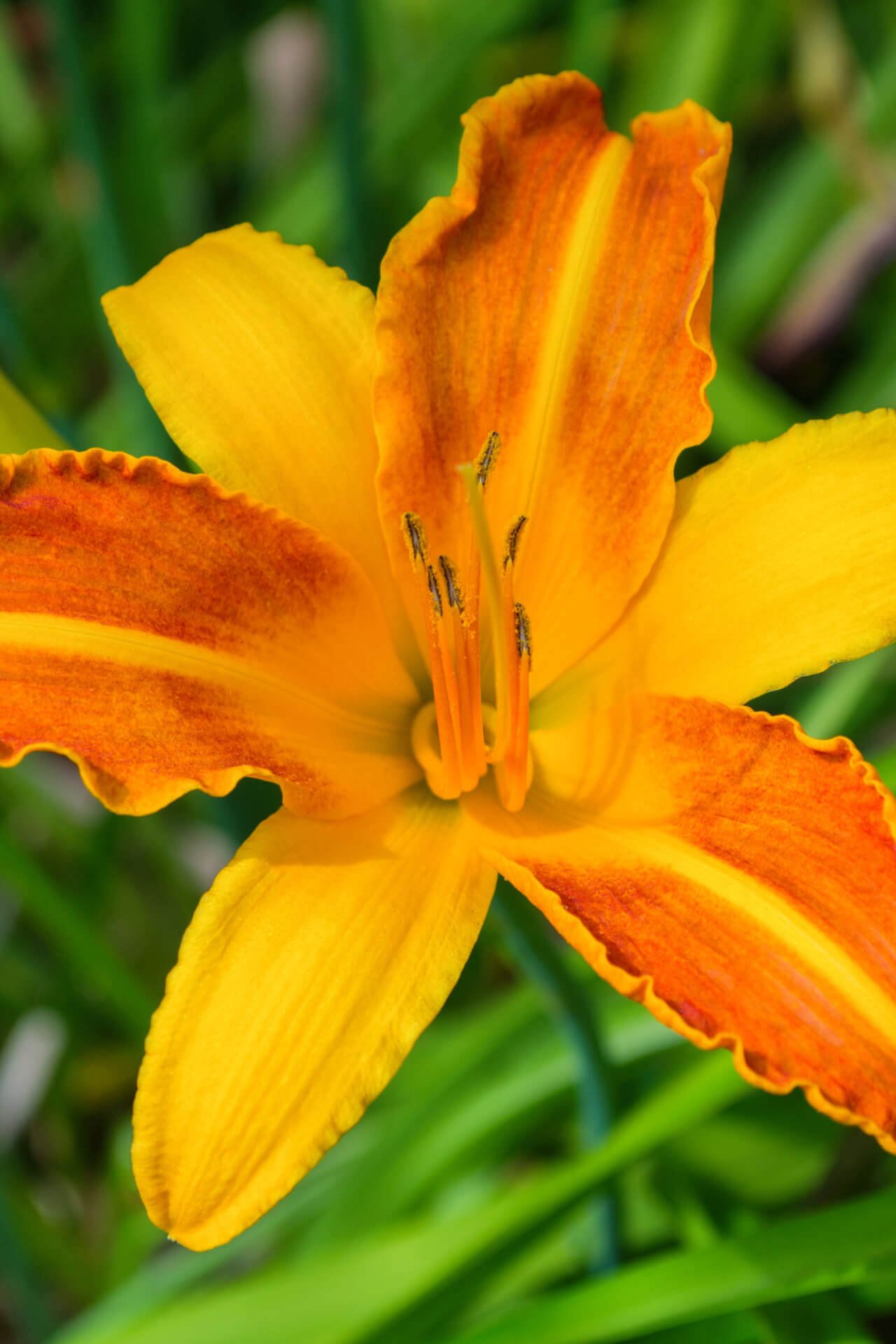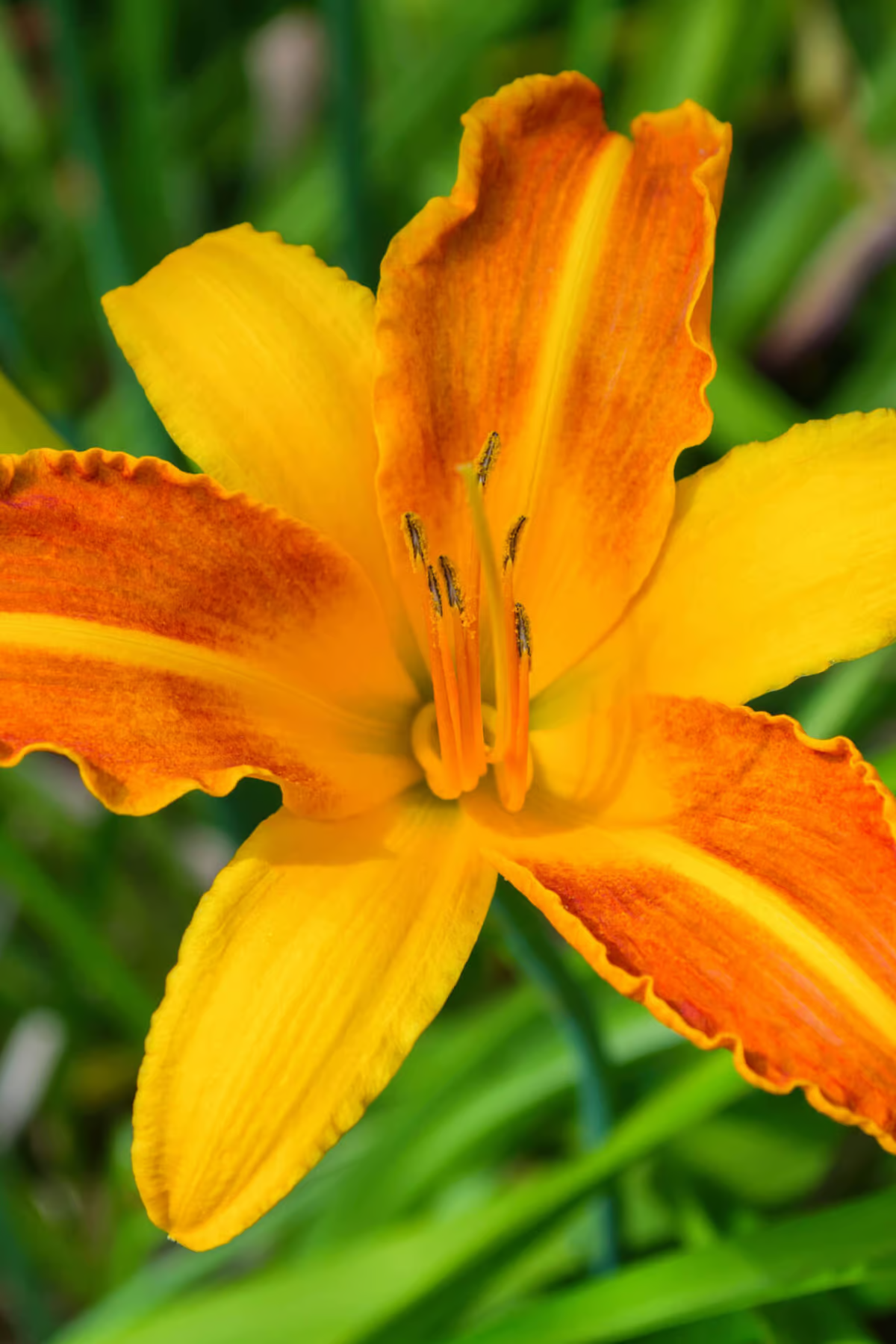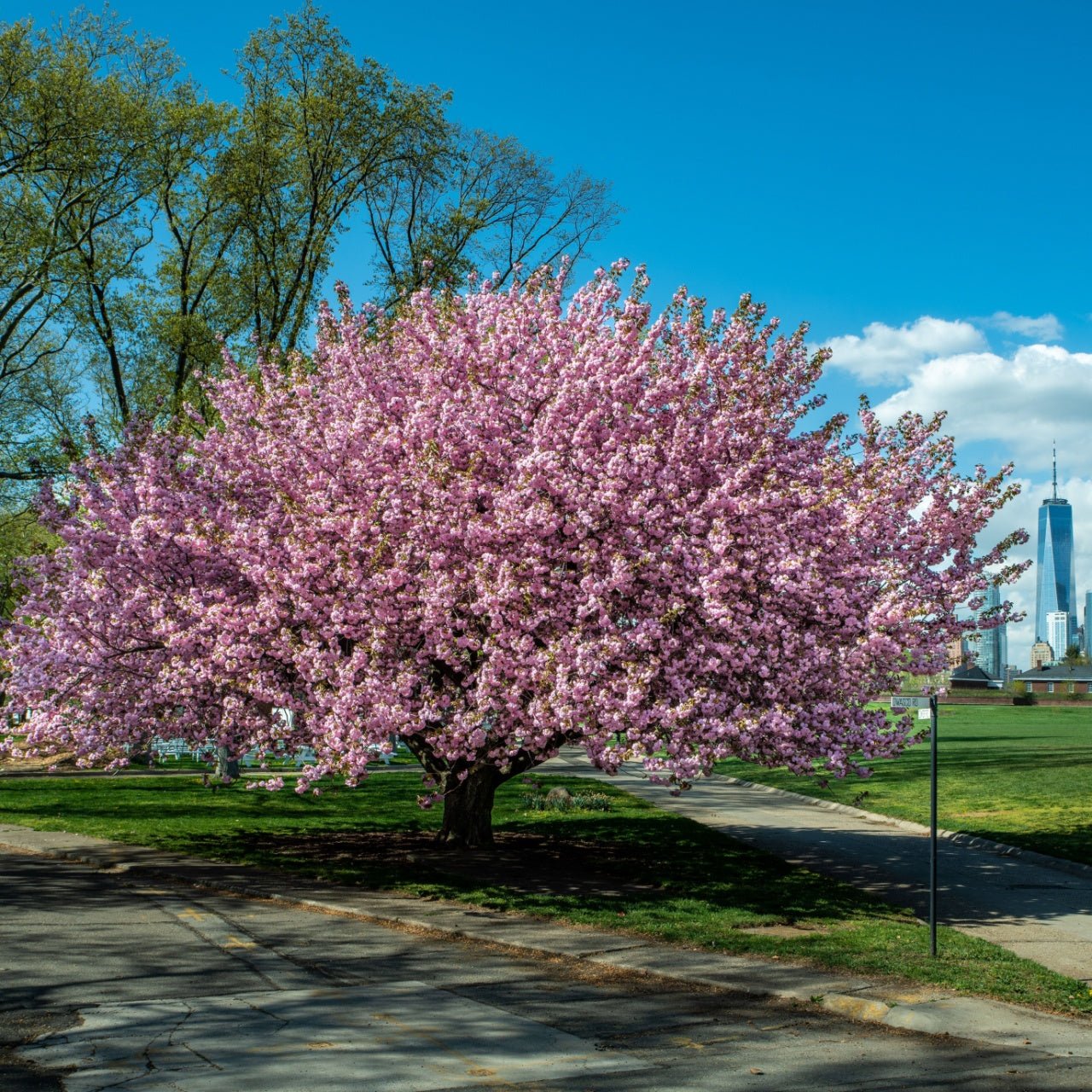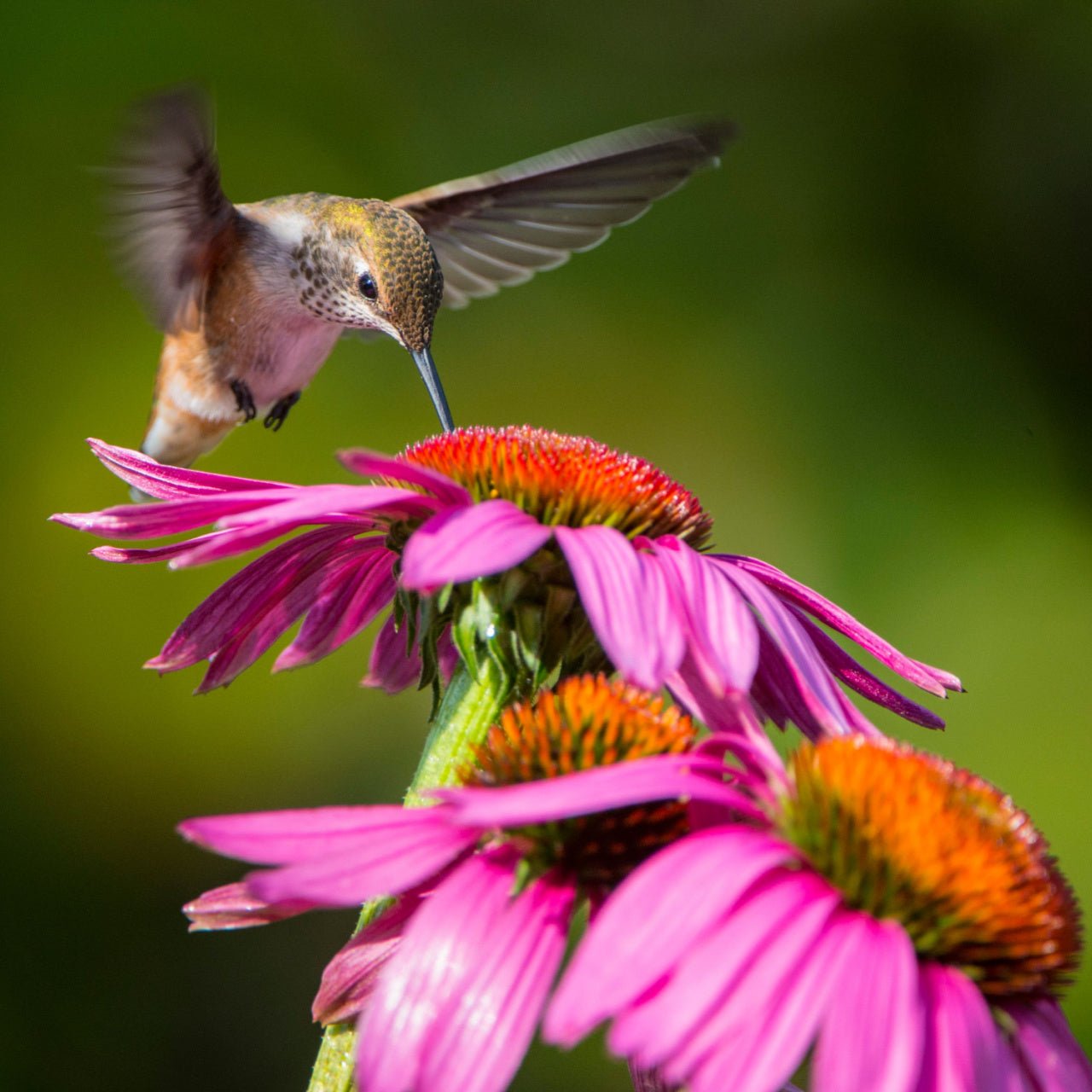



Orange Daylily
Brightens garden with vibrant color
Long-lasting blooms throughout summer
Drought-tolerant once established
Thrives in
ZONE 3ZONE 4ZONE 5ZONE 6ZONE 7ZONE 8ZONE 9This plant ships:
May 251 Year Guarantee on all plants
Orange Daylily - Hemerocallis fulva
The Orange Daylily (Hemerocallis fulva) is a showy midseason daylily that is well-loved among North American gardeners. Daylilies are native to Eurasia however there are now over 60,000 cultivars of daylilies and they are commonly seen perennials across North America.
This daylily produces huge flowers, reaching up to half a foot in width. The flowers are orangey-yellow in color, dusted in what looks like burnt orange blush across each petal. They grow to about 30 in in height and flower atop tall, bare stalks. They form clumps of gently arching, bright green sword-like leaves and develop colonies if allowed to spread.
Plant Details - Orange Daylily
Family: Asphodelaceae
Hardiness Zones: 3 to 9
Light Requirement: Full sun to partial shade
Water Needs: Moderate
Height: 2 to 2.5 ft
Spread: 2 to 2.5 ft
Growth Rate: Fast
Bloom Time: Summer
Flower Color: Tawny orange with a yellow throat
Wildlife Value: Attractive to pollinators
As their common name suggests, each flower from this impressive plant only lasts 16-24 hr. However, this short-lived nature is hardly noticed as each plant develops new flowers that bloom daily across the flowering season. Flowering ceases in autumn and the plant will go dormant until the following spring once freezing temperatures arrive.
The Orange Daylily is known as a ‘perfect perennial’. It is drought tolerant, can withstand high levels of heat stress, is easy to maintain, and grows across most USDA Hardiness Zones. Given their robust nature, they can be grown using many cultivation methods. Plant them directly in your garden as a border plant, in a raised bed with other perennials, or grow them in containers situated on your deck. These versatile perennials will brighten any location.
Landscape Uses and Maintenance - Orange Daylily
Doing best in full sun, they will tolerate part sun as well. In regions with intense summer heat, require some shading. To keep the foliage green, water about 1 in per week. They prefer moist, well-drained soils with a slightly acidic to neutral soil pH.
These perennials easy to maintain and do not have serious pest or disease issues. However, they can be susceptible to mites, thrips or aphids and occasionally daylily rust, so keep your eyes peeled. To keep these flowers in optimum health, cut the stalk back to the ground once they have finished blooming. During the die back in the late autumn, remove dead foliage from the plant.
Noteworthy Characteristics
Attractive to pollinators, prolific flowering, hardy nature.
With its impressive orangey-yellow flowers, this midseason perennial is a low maintenance and hardy addition your garden. Shop for Orange Daylily plants online at TN Nursery. For 68 years, we have served the landscaping industry and homeowners with specimen plants.
This Is How Your Plants Will Look upon Delivery

Bloom Season
Summer
Bloom/Foliage Color
Orange
Height at Maturity
Over 12"
Care
Orange Daylilies are low-maintenance perennials that thrive in well-drained soil with regular watering. Mulch near the bottom to maintain moisture and control weeds. Deadhead spent flowers encouraging more blooms and dividing plants every 3-4 years to prevent overcrowding.
Plant Reproduction
Orange Daylily spread quickly through their thick, tuberous roots and rhizomes, forming clumps.
Shipping date depends on the date displayed and chosen when you order from the product's page.
We only accept returns on plants verified dead. If you think your plants have died, we offer a 1 year warranty, please use this File a Claim Link to verify dead plants and start with return warranty process.






Adaptable:
They thrive in various soil types and conditions, adapting well to different garden settings.
Drought Tolerant:
Orange Daylilies are drought-resistant, making them a sustainable choice for water-conscious gardeners.
Distinctive Blooms:
Orange Daylilies offer bright, trumpet-shaped flowers that add a cheerful splash of color to any garden.
Long Blooming Period:
These daylilies have a prolonged blooming season, providing continuous beauty throughout the summer.
Caring Tips
How do I care for my Orange Daylily?
Each box contains detailed care instructions and information about your product. But here's the basics.
Care Tips
Orange Daylilies are low-maintenance perennials that thrive in well-drained soil with regular watering. Mulch near the bottom to maintain moisture and control weeds. Deadhead spent flowers encouraging more blooms and dividing plants every 3-4 years to prevent overcrowding.
Light Requirements
Orange Daylilies flourish in full sun to partial shade. They need at least 6 hours of natural day light for optimal blooming but can tolerate some afternoon shade. Adequate light ensures vibrant blooms and robust growth throughout the season.
Hardy Planting Zones
3 • 4 • 5 • 6 • 7 • 8 • 9
Header
Use this content to share information about your store and products.
Frequently Asked Questions
How often should I water my plants?
How do I know if my plant is getting too much or too little sunlight?
What should I do to prepare my plants for winter?
What are the signs that my plant needs fertilizing?
How can I prevent pests from damaging my plants?
How do I choose the right plant for my climate zone?






